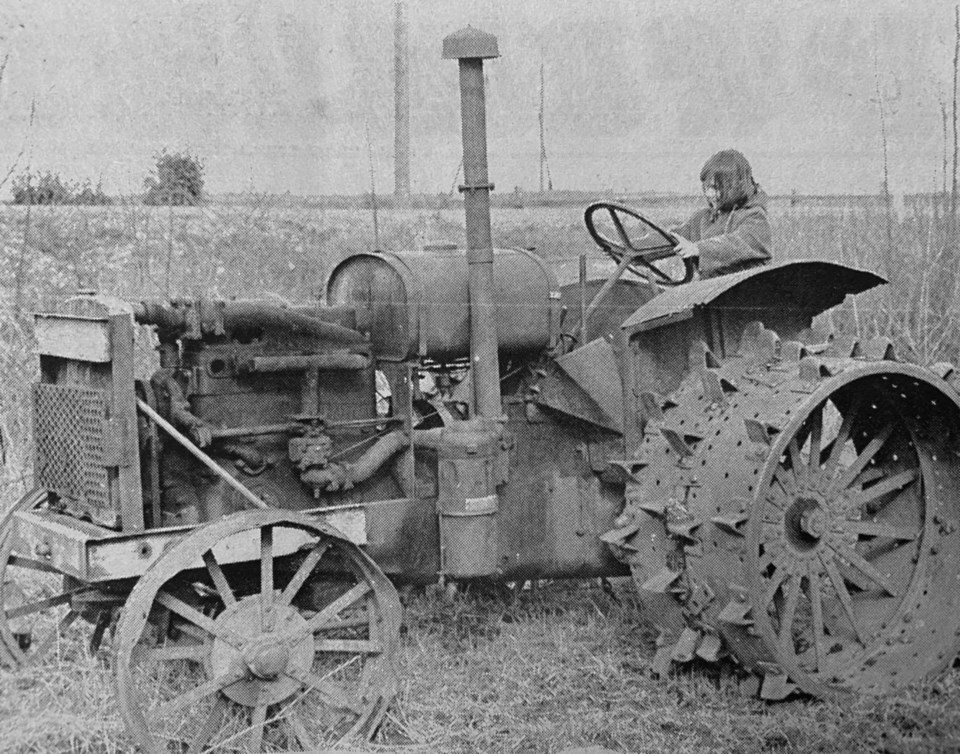It was controversial and bitterly contested legislation at the time, but now it is credited with saving thousands of acres of prime farmland in Delta from falling victim to developers.
Fresh off their provincial election victory the year before, the New Democrat government in 1973 introduced what's still considered a radical law, creating a development exclusion zone aimed at protecting arable farmland.
When it was introduced, the Agricultural Land Reserve (ALR) drew an immediate and negative reaction from many Delta farmers, developers and property owners.
The legislation was introduced at a much different time in the municipality, an era of tremendous growth following the opening of the George Massey Tunnel over a decade earlier.
The person that received the biggest brunt of the 1973 backlash in Delta was Carl Liden, the NDP MLA for the riding.
At a special meeting of the Delta Chamber of Commerce's agriculture committee in January of that year, Liden did his best to explain why the land freeze was necessary, saying speculators owned most of the farmland in Delta.
Noting farmers approached him in favour of the freeze, Liden said his government's position was "to make the best use of the land for all of the people, and to save the farmland but not at the expense of the farmer."
The committee's chair, John Friesen, presented a critique of the plan, saying farmland in Delta had been "shamefully raped by all three levels of government" causing an untenable situation for farmers that remained in the area as landowners. He said it was "grossly unfair to require that these lands remain in agricultural production in an area that is neither economically suited for farming, nor in harmony with the surrounding community."
Friesen blamed the George Massey Tunnel, highways, the superport, railway and numerous other expropriations of land for having "knocked the spirit of farming."
Liden would also get an earful at a heated public meeting in Ladner that year, where more than 1,000 people showed up to voice their anger. At that gathering, local farmers and landowners were critical of the New Democrats, saying the government was seizing land while not doing enough to help farmers.
Liden once again tried to explain that real estate firms owned large tracts in Delta.
"I don't think their intention is to farm the land," he said.
At a meeting of the South Delta Taxpayer Society in 1973, Liden also noted the government was helping the farmer with the legislation because "this bill will keep farmland prices down to where farmers can afford to buy farmland for farming. It will stop farmers from leaving their lands."
Local farmers also took exception to what Harry Lash, director of planning for the Greater Vancouver Regional District, had to say in a presentation to the Delta Chamber of Commerce. He explained the land commission's philosophy was that it wasn't important farmland wasn't actively being farmed at that time.
“The land commission has said that even though farming may not be profitable now, they think it will become viable in the future with the growing food shortage,” Lash stated.
In a presentation to government that year, Delta Farmers’ Institute representative Mike Guichon, a member of a pioneer Delta family still farming today, described Delta as being “a victim of circumstance” and suggested “some of these lands are destined for other uses. Some industrial, some residential, some open space and some agricultural.”
He said a buy-up program was the only meaningful solution because “anything short of this will not work. Legislating the land does not legislate the man and without eager, dedicated farmers there is no farming.”
Much to the chagrin of many, the province enacted the legislation, virtually freezing thousands of acres in Delta.
Decades later, the ALR has been credited for saving farmland in the Lower Mainland from being paved over, although urban growth, high land prices, increasing costs, urban-rural conflicts and other pressures continue to pose challenges for soil-based farming.
In 2019, following a report by a committee looking into revitalizing the ALR, as well as the Agricultural Land Commission (ALC), some wide-sweeping changes were introduced.
New legislation, Bill 15, the Agricultural Land Commission Amendment Act 2019, enacted several changes including the elimination of six regional panels.
According to the province, about 10,181 hectares (25,157 acres) of Delta’s total land area of 36,433 hectares (90,027 acres) is in the ALR. That works out to about 28 per cent.
The City of Delta is currently working on updating its agricultural plan to support farmers.



-at-paterson-park-in-the-1960s.-ian-paton-sr.-conducts-auction.jpg;w=120;h=80;mode=crop)
